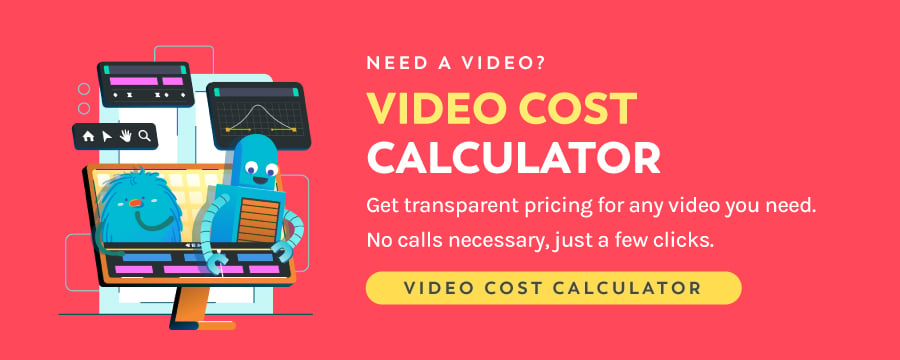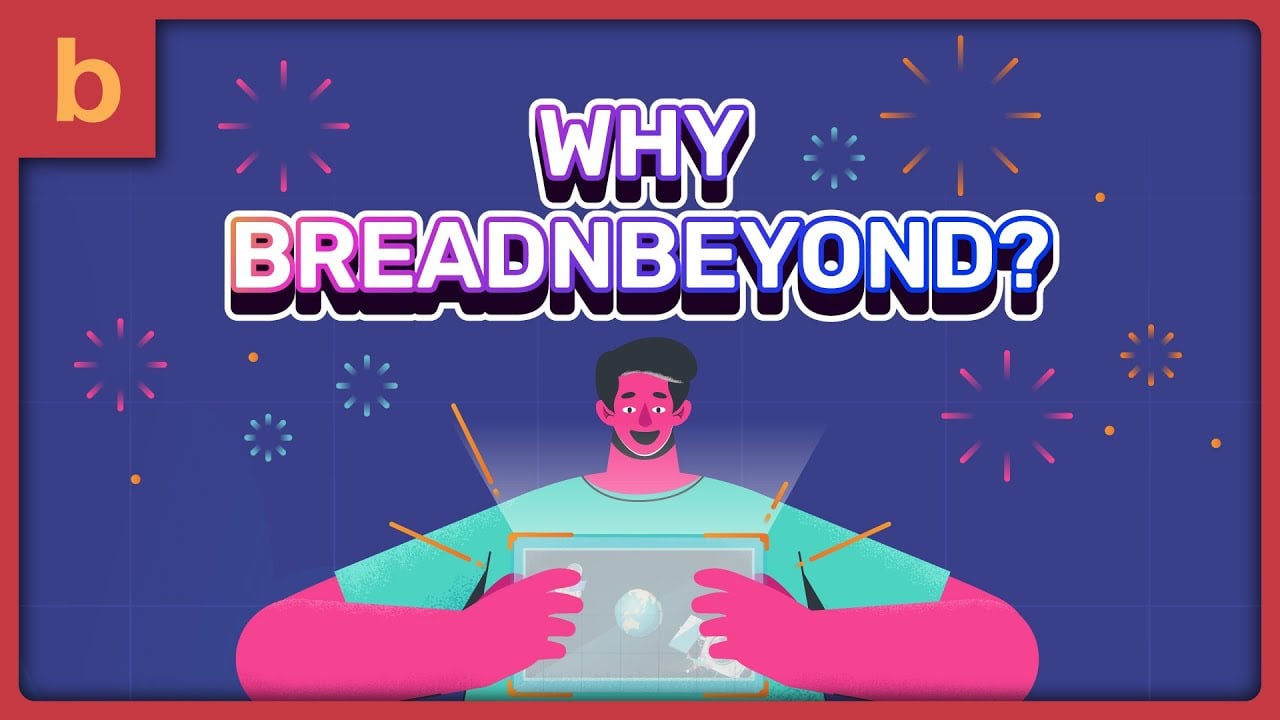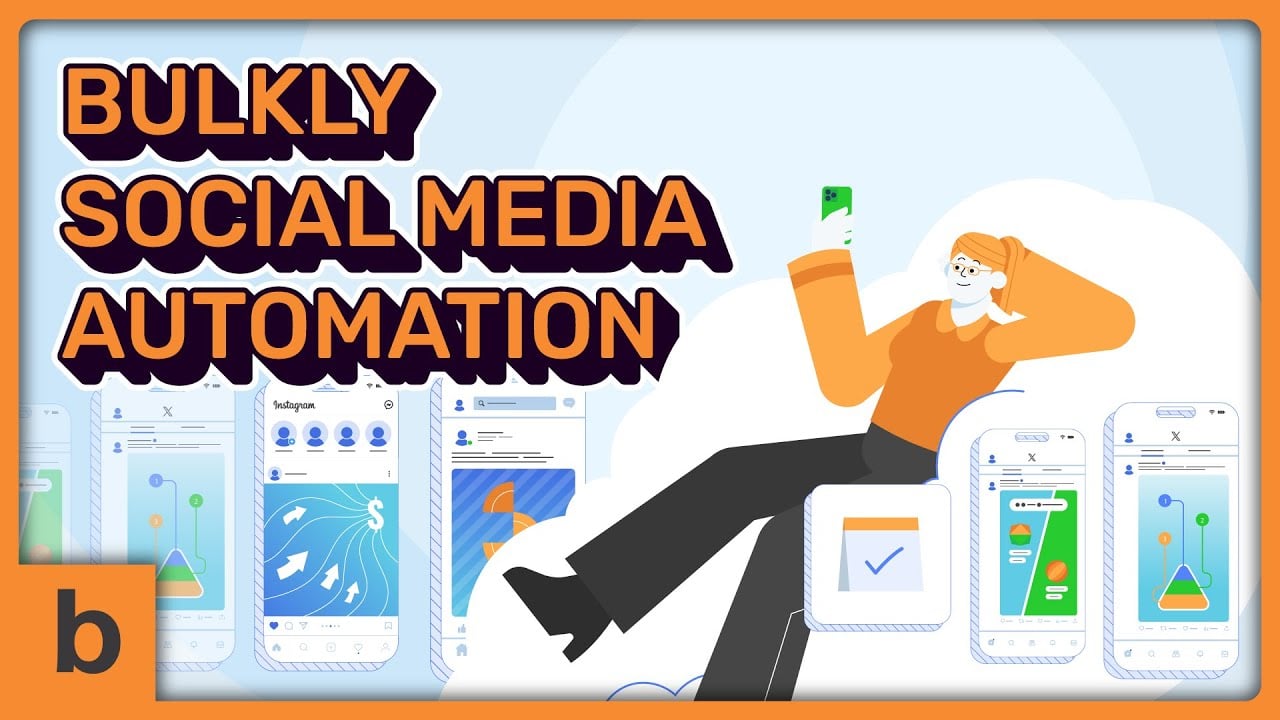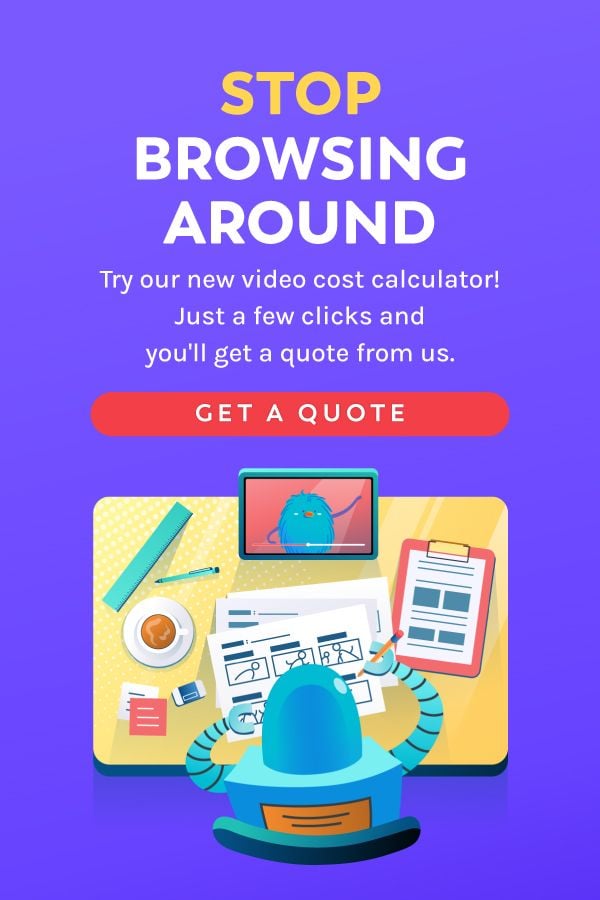Table of Contents ×
- 1 Things People Have (Actually) Said to Me
- 2 The Truth About Explainer Videos: Debunking Explainer Video Myths
- 2.1 Myth #1: “Customized animated explainer videos are too expensive.”
- 2.2 Myth #2: “Explainer videos MUST be 2 minutes long.”
- 2.3 Myth #3. “Animation isn’t ‘serious’ enough for B2B.”
- 2.4 Myth #4. “If it looks cool, it will definitely work.”
- 2.5 Myth #5. “The more expensive the production, the higher the chances of success.”
- 2.6 Myth #6. “If we add more information, it’ll be more informative.”
- 2.7 Myth #7. “If we’re not going viral, we’re doing it wrong.”
- 2.8 Myth #8. “Explainer videos are a single-use tool.”
- 2.9 Myth #9. “We don’t need storytelling. It’s a corporate video.”
- 2.10 Myth #10. “Our message is too complex for a short video.”
- 3 Cleared the Fog, Now Let’s Log Off
Are explainer videos worth it? Yes. The truth about explainer videos is that, when done right, they are a powerful tool for simplifying complex information and engaging audiences. They get treated like the Nickelback of marketing tools, though. People pretend to avoid them, but conversion rates say otherwise. Let’s bust some explainer video myths!
Things People Have (Actually) Said to Me
You’d be surprised what people think explainer videos are. Or maybe you wouldn’t. Either way, I’ve heard it all:
“Can we make it go viral? Like, on purpose?”
“Can we get it done in three days? We’re going to launch the product next week.”
“I really don’t know what I want. Can I leave it all to you guys?”
Running an explainer video company is equal parts creativity and gentle myth-busting.
People come in with all kinds of ideas and expectations about what these videos are and how they work.
I don’t blame them. The internet is a place full of Canva templates, AI tools, and $50 custom videos from Fiverr.
So, before we unpack the biggest myths that keep circulating, let’s just agree on this: explainer videos can be game-changing. But the game-changer and professionally-made ones are not made with fairy dust, shortcuts, or wishful thinking.
The Truth About Explainer Videos: Debunking Explainer Video Myths
Most things in life come with a side of myths. Like swallowing gum takes seven years to digest, goldfish only have a three-second memory, a penny dropped from the top of the Eiffel Tower could kill someone.
Explainer videos are no exception. They come with their own set of myths, half-truths, and misunderstandings.
After over a decade in the industry, I’ve heard just about every tall tale in the book.
Apparently, explainer videos are either too expensive, too corporate, too complicated, or, my personal favorite, totally unnecessary because “our product explains itself.”
And just like urban legends about Bigfoot, these explainer video myths can be surprisingly persistent.
I wrote this article to clear the air, call out the nonsense, and give you the real story as someone who’s seen it all from script to screen.
Let’s unpack (and lovingly debunk) the most common myths and spill all the truth about explainer videos.
Myth #1: “Customized animated explainer videos are too expensive.”
A customized explainer video will cost more than slapping your logo on a template and calling it a day. That’s like saying a bespoke suit is more expensive than a one-size-fits-most Halloween costume from the bargain bin.
You’re not wrong. But also, you’re kinda missing the point.
Templates are great for birthday invitations. Your brand deserves more than that.
Because here’s the deal: If you’re banking your brand’s first impression on a video, are you really going to bet it all on a drag-and-drop cartoon and royalty-free ukulele music?
That DIY tool might look a lot more affordable, but it also expects you to be a writer, a motion designer, a voice director, and a storyteller. Not to mention that you have to pay for the privilege of looking just like everyone else.
When you create a fully customized explainer video, the video speaks your language and tells your unique story.
Sure, it might seem pricey up front, but it was created just for you, for your unique audiences, delivering your unique value in a way that feels effortless, intentional, and totally you.
For example, we created this animated brand video for ourselves to demonstrate why we’re different from other explainer video production companies. There are thousands of studios out there. How could we afford just to blend in?
We use our mascots, brand color palettes, tone of voice, and signature animation style to reflect our brand identity and work ethos. It’s all us, through and through.
Myth #2: “Explainer videos MUST be 2 minutes long.”
Ah, the sacred two-minute rule, handed down from the Ancient Marketers of 2012 and etched into the stone tablets of “best practices.”
I remembered I also did my own survey and research to prove the two-minute rule, and it was actually right. But that was almost a decade ago. You can read it here: Case Study: Finding Out the Optimal Explainer Video Length.
Today’s audiences aren’t checking their watches and going, “Hmm… this is only 89 seconds. I simply cannot engage.”
Great explainer videos are as short or as long as they need to be. I’ve made killer 45-second explainers that convey the whole message, and I’ve also created 3-minute videos that break down one main topic more in-depth and make it more digestible.
Now, it’s less about the length. The clarity, the pacing, and the message can determine how long your explainer video should be.
Don’t get me wrong, though. Longer explainer videos don’t mean that you should rumble on with backstory, buzzwords, and every detail under the sun.
You still need to earn every second of your viewer’s attention. If you’re stretching the runtime just to cram in more info, people will drop off.
Sometimes, less is more. Sometimes, more is just right.
Either way, your story deserves better than a one-size-fits-all timestamp. Let your core message lead. The runtime will follow.
Myth #3. “Animation isn’t ‘serious’ enough for B2B.”
Who says B2B has to be serious all the time?
Animation isn’t just for quirky startups or quirky pet product ads.
It’s actually a powerhouse tool even for B2B brands looking to break through the noise and engage decision-makers in a memorable way.
The idea that “animation” is somehow inherently unprofessional or childish is rooted in some so-yesterday thinking. If anything, animation is one of the most flexible storytelling formats out there.
You can use animation to explain complex financial strategies or showcase an enterprise-level SaaS solution. Not to mention that those graphics make it much easier for you to create metaphors and visuals that would be impossible with live action.
Imagine trying to show how your cloud-based IT service integrates seamlessly with financial sectors with actors? Possible. But animation makes it a lot easier. Like this one animated explainer video we created for Result Technology:
An animated explainer video takes those tricky concepts and boils them down into something intuitive.
Myth #4. “If it looks cool, it will definitely work.”
Creating a high-quality visual for your explainer video is only half the battle, and I’m not saying quality doesn’t matter.
A fancy design or an eye-catching animation will grab attention, but if the message behind the visuals doesn’t resonate, it won’t bring you anywhere.
Clients, customers, and viewers aren’t buying into your “coolness.” They’re buying into the value and clarity you offer.
So yeah, the “visually-appealing” factor is important. But only if it supports your message.
A stunning explainer video with no clear call-to-action and full of jumbled narratives of how your product works will leave viewers confused and unmotivated to take the next step.
It’s not enough to just “wow” your audience with visuals; you have to educate them, too.

Myth #5. “The more expensive the production, the higher the chances of success.”
Cost doesn’t equal conversion. It doesn’t equal engagement, shareability, or even clarity, too.
Of course a higher budget can get you better visuals, a top-tier voice-over artist, or smoother animation. Who can resist?
But all of that money that went to a high-end video production doesn’t guarantee your video will perform any better than one with a smaller budget and a smarter strategy.
This myth is the explainer video version of thinking that designer clothes will automatically make you more charismatic.
They might help you look the part, but if you don’t know how to tell your story or connect with your audience? You’re just a well-dressed wallflower.
A successful explainer video doesn’t need to break the bank. It needs to understand the audience, communicate a clear message, and deliver it in a way that’s engaging, helpful, and memorable.
I’ve compiled 100+ explainer video companies, ranging from big-budget studios to scrappy creative teams that know how to make an impact without burning cash. Check it out here: Top 100+ Explainer Video Companies to Work With.
Throwing money at a production doesn’t fix a weak script. It won’t rescue a muddled message. And it won’t magically connect with your viewers if it doesn’t speak to their needs or pain points.
Strategy, clarity, and storytelling are what drive results, not how cinematic your lighting looks.
Yes, it’s always better to invest in quality. But don’t confuse a high price tag with high performance.
Myth #6. “If we add more information, it’ll be more informative.”
Some of our clients want to make the best out of their explainer video to the point that they want to cram everything into it. Their product’s entire origin story, every feature, the pricing structure, the future roadmap, and customer testimonials.
The intention is totally valid. They just wanted to make sure that their audience was fully informed, no questions left unanswered.
But there’s a catch: trying to say everything usually ends up saying nothing at all.
Explainer videos are supposed to spark interest, make things clear, and guide the viewer to want more. When you flood it with information, viewers get overwhelmed, tune out, or forget what the point was in the first place.
Focus on what matters most. What’s the core problem you solve? What’s the “aha” moment your audience needs to hear?
Myth #7. “If we’re not going viral, we’re doing it wrong.”
Somewhere along the way, “going viral” became the gold standard of a video’s success.
It’s great to dream big.
But explainer videos aren’t built to break the internet. They’re built to build understanding.
Their job isn’t to entertain the masses. It’s to connect with your specific audience, educate them, and guide them to take action.
If it happens to go viral? Cool. But that’s a bonus, not the main goal.
Besides, chasing virality often leads to watered-down messaging or trying too hard to be trendy. You end up with a video that might be entertaining, but doesn’t say much about your product or why anyone should care.
What I’m trying to say is that a video doesn’t have to go viral to be wildly effective. If it helps your sales team close deals faster, increases your sign-ups, or finally gets your pitch across in a way that clicks. That’s a win.
Take the video we made for Bulk.ly, for example. It wasn’t shown to the masses. Just their warm leads.
But even so, it played a big role in driving a 280% increase in new user sign-ups and made the onboarding process way smoother.
Read the case study: How Our Explainer Video Boosted Trial Sign-Ups by 280%
Myth #8. “Explainer videos are a single-use tool.”
Who wants to buy a single-use tool in this economy?
With a little smart editing, clever placement, and a dash of creativity, your explainer video isn’t just a one-and-done launch moment.
It’s an investment that keeps giving, so it becomes a core part of your brand’s communication toolkit for years to come.
You can repurpose your explainer video for:
- Homepage
- Landing pages
- Sales presentations
- Email marketing
- Social media snippets
- Trade shows
- Internal onboarding
- Investor pitches
- Ads
Myth #9. “We don’t need storytelling. It’s a corporate video.”
It usually sounds like: “This is serious business, we don’t need fluff. Just give them the bullet points.”
But storytelling isn’t fluff. It’s the framework that makes people care.
Even in the most buttoned-up B2B or corporate settings, we’re still talking to humans. And humans are wired for stories, not jargon.
Storytelling gives your message structure, emotion, and momentum. It’s what helps your audience relate, remember, and respond.
Without a narrative arc, your video becomes a forgettable info dump. With it, you’ve got a piece that informs and connects.
One of our clients, LabLogs, came to us wanting a straightforward demo video. But instead of just listing features, we built a story around a frazzled lab manager drowning in papers.
Within 90 seconds, viewers saw themselves in that chaos and watched it transform into calm, thanks to LabLogs.
That’s the power of storytelling: it turns “here’s what we do” into “here’s how we make your life better.”
So no, storytelling isn’t just for Pixar. It’s for every brand that wants to be remembered. Even the ones in suits.
Myth #10. “Our message is too complex for a short video.”
I hear this one a lot, especially from tech companies, SaaS platforms, or anything involving acronyms, dashboards, and “robust capabilities.”
The logic goes something like: “It’s too advanced, we’ll need at least 10 minutes to explain it all.” If it’s that complex, your audience needs clarity even more.
A great explainer simplifies. It distills. It clarifies the why before diving into the what or the how.
That’s what turns confusion into curiosity.
We don’t have time (or patience) for an encyclopedia on autoplay. We just want to quickly understand:
- What it is
- Why does it matter
- How does it help us as users or customers
If you can’t deliver your message simply, it’s not your audience’s fault. It means the message itself needs more work.
Take this, for example: we turned a dense, stat-packed World Bank report on poverty equity in Indonesia into a 3-minute animated explainer that even our non-economist friends could easily understand.
Instead of overwhelming viewers with charts and dense economic terms, we built a visual story around a single question: “What does it actually mean to move out of poverty?” That became our anchor.
Cleared the Fog, Now Let’s Log Off
So there you have it. The myths and the truth about explainer videos. Well, I’m in the industry, so of course I sound like I’m going to hype up explainer videos. But here’s how you can steer clear of the myths and make up your own mind (bias-free):
- Do your own digging. Check out real case studies, not just studio highlight reels. Look for actual business results, not just pretty animations.
- Ask better questions. Most explainer video studios offer a consultation session. Don’t just ask “how much?” Ask what’s included, what’s customizable, and how it fits your goals.
- Beware the bargain bin. If it looks too good to be true, it probably comes with a template and stock music. And zero strategy.
- Demand strategy, not just style. A great explainer video starts with insight, not just illustration. If the studio doesn’t ask about your audience or your goals, that’s a red flag.
- Reuse and recycle. Ask how you can repurpose your video content. A good partner will help you stretch your investment across platforms, not just hand you a one-and-done file.
- Get a second opinion. Talk to businesses who’ve already done it. What worked for them? What didn’t? Their experience is often the best mythbuster around.
Now I know what you’re thinking, “But how do I know if I actually need an explainer video?”
Good question. I’ve put together an article to help you figure that out: When Is the Best Time to Create an Explainer Video? (+Flowchart)
At Breadnbeyond, we’ve been helping brands turn head-scratchers into no-brainers since before explainer videos were cool. If you’re curious how yours could look, feel free to drop by by clicking the banner below!







